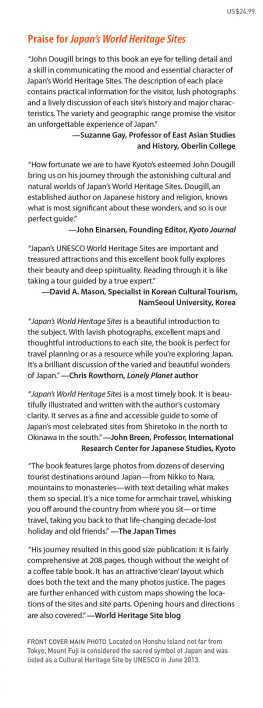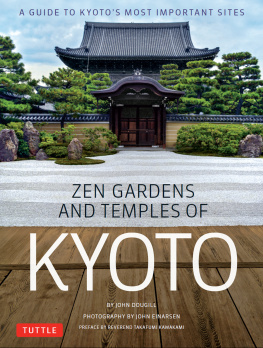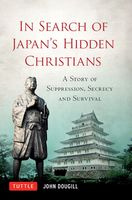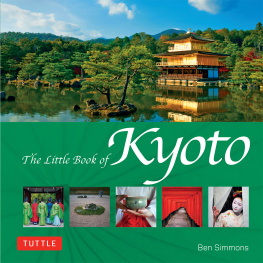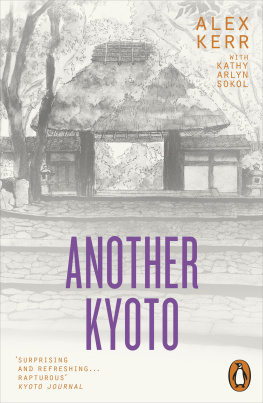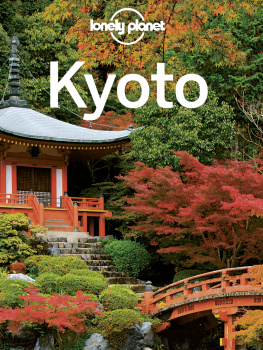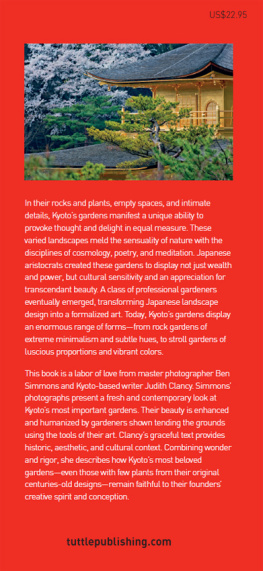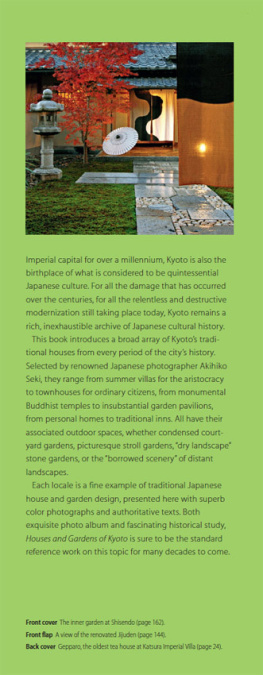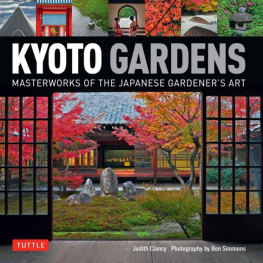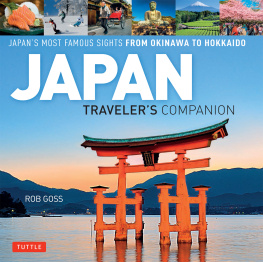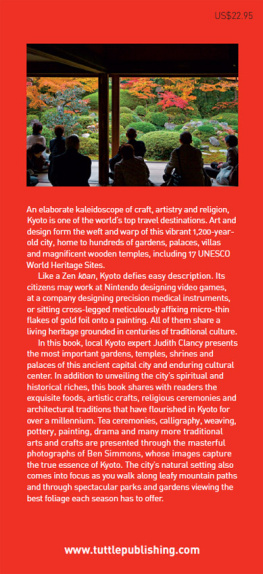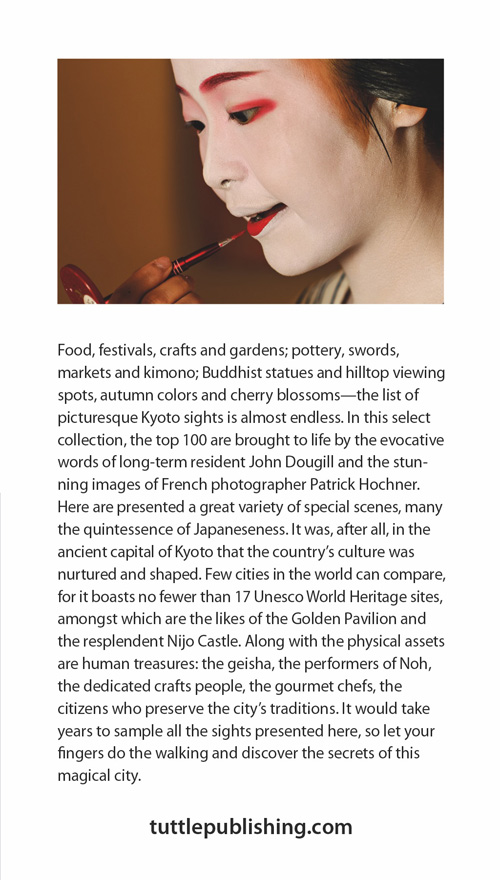
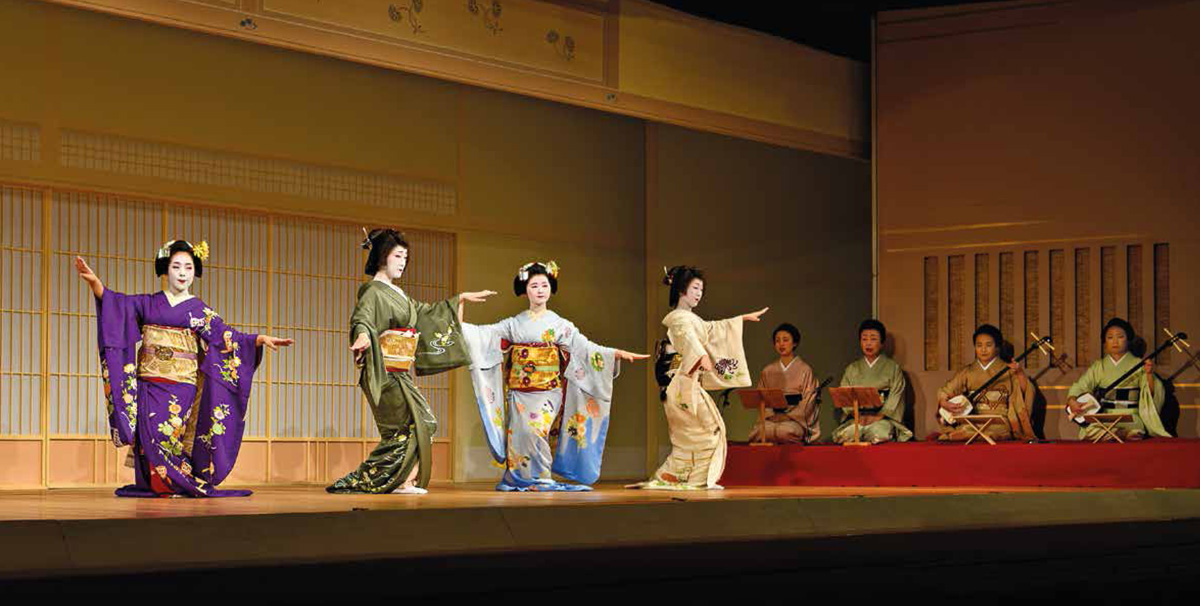
KYOTO
SIGHTS
DISCOVER THE REAL JAPAN
John Dougill
photography by Patrick Hochner

An Unforgettable City of Wonders
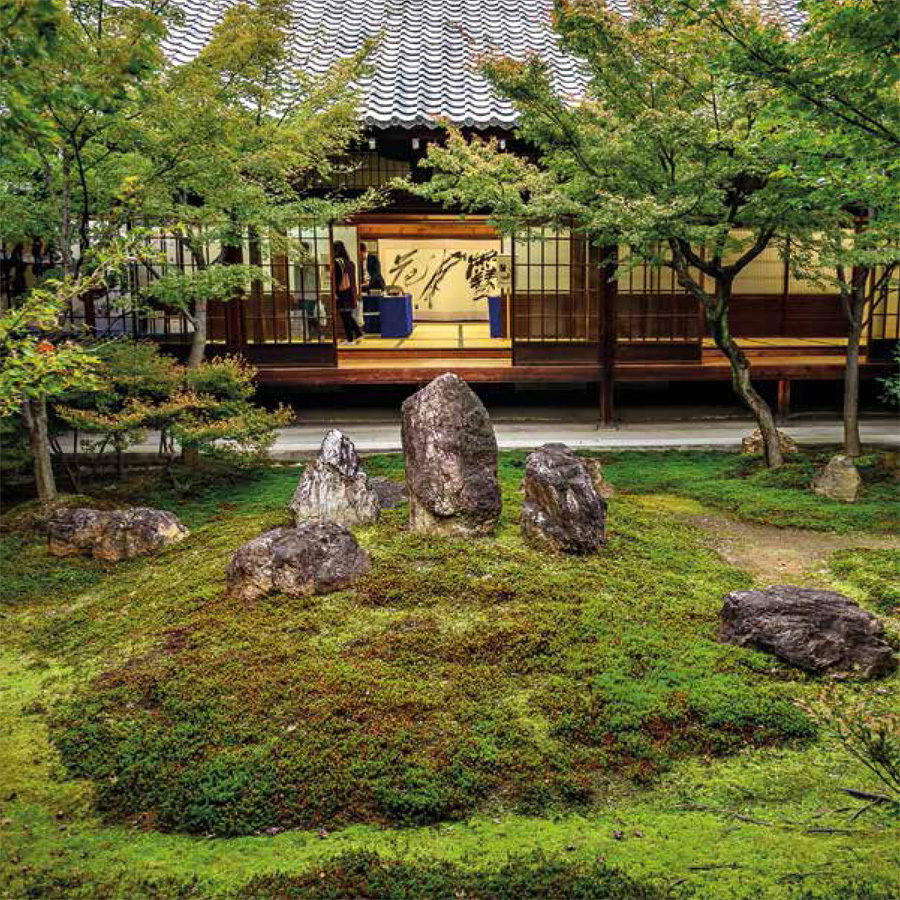
The inner garden of the Zen monastery of Kennin-ji exemplifies the traditional aesthetics of Japanese arts and architecture.
Kyoto is a city of 1.5 million people, making it the 8th biggest in Japan. It is compact, set in a river basin and restricted in size by the surrounding hills. This makes it a pleasant place to live, for it is not only easy to get around but the wooded fringes and river banks give quick access to hillside and greenery. There is an abundance of underground water, too, with wells and springs throughout the city, and the flourishing flora once gave rise to the epithet, the flowering capital.
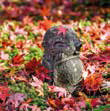
One of the delights of wandering around Kyoto is discovering curiosities, such as this garden guardian at Enko-ji.
Yet, for those arriving at the modern JR station, the first impression is altogether different. There are shopping malls, business hotels, convenience stores, traffic jams, overhead wires and high-rise apartment blocks. How can this be? The city is, after all, the soul of Japan, and regularly voted by travel magazines as amongst the most beautiful in the world. In literary terms, it was immortalized as The Ancient Capital by Yasunari Kawabatas nostalgic novel. The contrast of modernity and tradition, of image and reality, is so striking that manga writers like to depict the city in terms of black holes and time warps that open up into different dimensions. There is a touch of magic about all this, and the enchantment goes back to the very origins of the city.
Kyoto Timeline
Foundation of Heian-kyo by Emperor Kammu
1186 Samurai shogunate rules from Kamakura
12th c Heian-kyo becomes known as Kyoto
1333 Ashikaga shoguns rule from Muromachi in Kyoto
146777 Onin War razes much of the city
1580s Unification of Japan, Hideyoshi reorganizes Kyoto
1603 Tokugawa shoguns rule from Edo (Tokyo)
1868 Meiji Restoration and emperor moves to Tokyo
1945 Kyoto spared bombing in World War II
1964 Kyoto Tower initiates city modernization
The founder, Emperor Kammu, had moved to Nagaoka in 784 to escape the straitjacket of Buddhism in Nara, but after a series of disasters he became convinced his new capital was cursed. Working closely with experts in geomancy, he sought a more amenable location. The requirements were that there should be mountains in the north, east and west, with open land to the south; there should be rivers to the east and west; and there should be a body of water to the south. He found what he was looking for in the Kyoto basin, and in 794 he named the new capital Heian-kyo, Capital of Peace and Tranquility. In many ways, it was just that, as for nearly 350 years peace, poetry and prosperity prevailed, with not a single use of capital punishment. The worst fate imaginable was to be exiled from this glittering city.

The citys festivals maintain ancient traditions, such as the chigo at the Gion Matsuri, who acts as a vessel for the kami (deity).
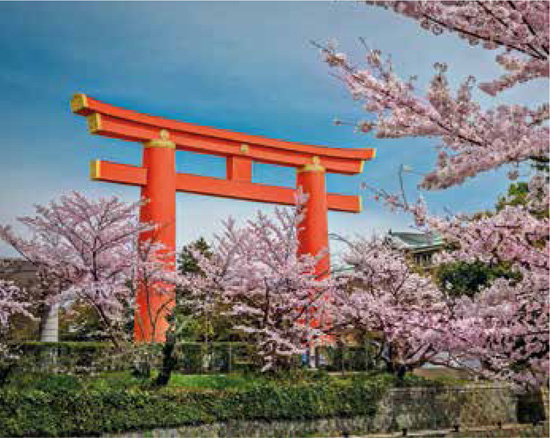
The magnificent torii gateway of Heian Shrine is almost 82 ft (25 m) high and overshadows the museums in Okazaki Park.
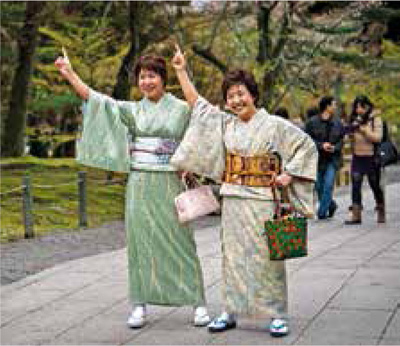
Women in kimono enjoy posing for photos on a day out in Kyoto. Those who dress in traditional style get discounts at certain shops.
Heian-kyo was built following Chinese models, with a grid system that is still evident today. It means there is little worry about getting lost, for streets are mostly oriented northsouth or east west. With its auspicious beginnings, it is no surprise that the capital went on to remarkable achievements. Here, in Heian times, lived the aristocrat aesthetes who haunt our imagination, and the court ladies whose brilliant works still enchant. Here, also, the courtly lovers who visited after dark and left before dawn to write their morning after poems. It was in Heian-kyo, too, that Abe no Seimei, the Grand Wizard of Yin-Yang, worked his magic among the spirits that lingered in the citys mists.
The Heian foundations were mixed with a large measure of Buddhism, and the city is studded with immense head temples. Central to this was the pragmatic Enryaku-ji Temple on Mount Hiei, which at a time when the samurai had overturned the established order, provided training for the founders of Japans biggest sects: the Pure Land sect, the True Pure Land sect, Rinzai Zen, Soto Zen and Nichiren. One of these played a formative role in shaping Kyoto cultureZen, or to be precise, Rinzai Zen. It caught on with the citys ruling class and found favor from powerful sponsors. As a result, there are seven great Zen monasteries spread around the city, which between them have produced one of the worlds great heritages, exemplified by Chinese ink paintings, architectural design and dry landscape gardens.
Two of Zens notable spin-offs are Noh and the tea ceremony, both of which developed out of interaction with Kyotos nobility. Slow-moving, elegant, profoundly spiritual, Noh is an acquired taste but one deeply appreciated by connoisseurs. Similarly, the tea ceremony, with its mannered movements, can be seen as an exercise in mindfulness and the subjugation of the ego. The ritual serves to raise awareness of the moment, and each gathering is treated as a unique occasion. The practice has won wider appreciation in recent years and spread around the world, but Kyoto remains its spiritual home.
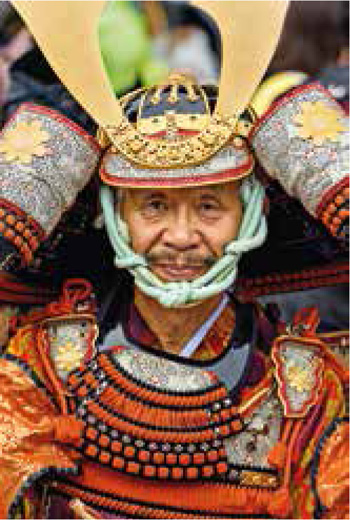
The Jidai Matsuri (Festival of Ages), which highlights Kyotos past, includes this samurai warrior from the Muromachi Period.
For many, however, Kyotos dominant image has nothing to do with Noh, or tea, or even Buddhism. It is the geisha. Her accomplishments are acquired by arduous training, backed by a whole industry of crafts which depend on her for business. They are part of the extraordinary heritage of craftsmanship for which the city has a deserved reputation. In every field imaginable, from dolls to sword-making, the city has achieved excellence, and over 70 different handmade items are recognized as distinctively Kyoto.
If Kyoto is a city of crafts, it is even more so a city of gardens. There are nearly 100 officially recognized gardens of special historical and artistic merit. Pond gardens, rock gardens, stroll gardens, paradise gardens, pleasure gardens, courtyard gardens, dry landscapesthere is no shortage of variety. Many have been maintained for centuries, with consideration given to replanting for future generations. Such is their fame that the citys name has been branded, and now there are overseas cities which proudly boast of their Kyoto garden.
Next page

